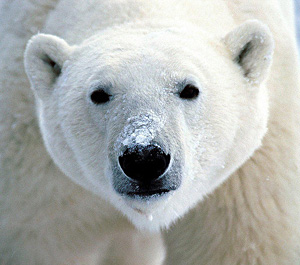-
Happy 4th of July and Reason to Celebrate!
Happy Birthday America!
While we celebrate the independence that’s often taken for granted, let us not forget all those who have died so that we may benefit.
And a celebration on the wildlife forefront, a victory for polar bears! From the Center for Biological Diversity, this fantastic email went out on July 2. For their legal efforts and all those who support their worthy causes!
“I’ve got great news for polar bears: A federal judge just ruled that polar bears must stay protected under the Endangered Species Act.
This ruling is a huge win for our long-running work to protect these mighty Arctic bears who are struggling to survive while facing rapidly melting sea ice and oil companies that want to drill in the heart of their habitat.
We wouldn’t have won this critical victory without the tens of thousands of actions you’ve taken and the support you’ve given us over the years to keep fighting in court for the majestic white bear — thank you.
Since 2005, when the Center for Biological Diversity authored the federal petition to list the polar bear under the Endangered Species Act, we’ve led the fight to keep the bears from extinction.
When our efforts finally paid off in 2008 and the Center and allies won a “threatened” listing for polar bears, we knew it was going to be a long fight to fully protect the bears and their habitat.
And when the state of Alaska, big-game hunters and others went to court this year to try to strip Endangered Species Act protections from polar bears, we knew we had to put everything we had into the fight. Our expert attorneys rose to the polar bear’s defense in court, outlining the urgent protections needed to save them from the terrible effects of global warming.
On Thursday, U.S. District Judge Emmet Sullivan rejected Alaska’s arguments and said the decision to protect bears because of melting Arctic sea ice was well supported. He also noted the plight of the polar bear was “troubling.”
Even as we take a moment with you to celebrate the court decision, we know our work is far from over. Scientists tell us that, left unchecked, warming could melt so much sea ice that two-thirds of the world’s polar bears, including all those in Alaska, will probably be gone in 40 years.
The Center is looking ahead to another pending court decision on our challenge to a Bush administration rule that exempted greenhouse gases from being addressed as part of the plan to protect polar bears.
As always, we’ll keep you updated on our efforts to secure the lasting survival of polar bears and count on your help to take action when we need it.
Thank you again for the part you played in helping secure this win for polar bears. We couldn’t have done it without you.”
-
No Halloween Treat for Bats
For Immediate Release, October 27, 2010
National Plan for Bat-killing Disease
Too Little, Too LateRICHMOND, Vt.— Four years into a wildlife disease epidemic that has already killed more than a million bats in the eastern United States, the federal government today finally released a national response plan for white-nose syndrome. But the U.S. Fish and Wildlife Service’s plan is still only in draft form and only provides a conceptual framework for responding to the disease. It lists no specific action items and makes no concrete recommendations for research and management of the fast-spreading malady that has hit nine bat species so far, including two on the endangered species list.
“It’s frightening to watch the government’s slow-motion response to what biologists call one of the worst wildlife declines in American history,” said Mollie Matteson, conservation advocate for the Center for Biological Diversity. “A year after it first released a draft version of its plan, we have yet another draft, and nothing that actually gives direction or provides resources to scientists in the lab or biologists in the field.”
White-nose syndrome is associated with a newly identified fungal species that grows on bats’ noses and wings and causes them to die of starvation during the winter. From its epicenter near Albany, NY, the disease has spread rapidly, with the fungus now found on bats in 14 states, from New Hampshire to Oklahoma, as well as the Canadian provinces of Quebec and Ontario. Bats play a vital role around the country in controlling moths, beetles and other insects.
“What would Halloween be without bats? Scarier still, what would America be without them?” Matteson said. “If we’re going to stem the spread of this deadly disease, we need the government to move quickly with a well-coordinated, well-funded response. In moving too slowly and failing to include concrete action, this plan keeps bats on the path to extinction, and we’ll all be poorer for it.”
The national plan has been long awaited by wildlife agencies and conservation groups as a way to push response to the disease into higher gear. Already, some bat populations in eastern states have declined by as much as 80 to 100 percent, and scientists fear that as the disease spreads westward, it will eliminate entire species of the insect-eating mammals. Insect populations may take off as a result, biologists say.
“The nightmare of this disease is only accelerating, but the federal government continues to waste time, as if it has decades to figure things out. The bats can’t tolerate more dramatic losses, and they can’t tolerate any more government foot-dragging,” said Matteson.
As an alternative to the Fish and Wildlife Service’s conceptual draft plan, the Center for Biological Diversity is urging the federal government take the following actions over the coming several months:
- Immediately declare white-nose syndrome a wildlife emergency
- Dedicate at least $10 million for white-nose syndrome research in next year’s Interior budget
- Develop a systematic plan for restricting access to all bat-occupied caves and mines on Bureau of Land Management lands and prohibit nonessential human access to all U.S. Forest Service caves in the Southwest by the end of the year
- Finalize the national response plan for the disease by mid-January
- Develop a National Park Service plan by mid-February to limit the disease’s spread
- Prohibit nonessential human access to all Forest Service caves in the Intermountain, Northern, Pacific Southwest and Pacific Northwest regions by late February
The Fish and Wildlife Service is accepting public comments on the draft plan for the next 60 days. After that, it will review the public response and finalize the plan. Specific measures for addressing the bat disease will be contained in a subsequent implementation plan, but there is no deadline for completion of the implementation plan, according to Fish and Wildlife Service officials.
Background
The Center filed a petition earlier this year to close all federally owned bat caves in the lower 48 states to protect bats from the possible human-caused spread of the white-nose fungus. Since then, the Forest Service has declared all bat caves in its Rocky Mountain Region (Kansas, Nebraska, Colorado and most of Wyoming and South Dakota) off-limits to recreational use; the Bureau of Land Management advised its state directors to take precautionary measures against the disease, including targeted cave closures; and the Fish and Wildlife Service administratively closed all bat caves and mines within the national wildlife refuge system. Last year, the Forest Service closed bat caves to recreational use in eastern and southern national forests.The Fish and Wildlife Service has yet to act on a Center petition, filed last January, to list two white-nose-affected bat species under the federal Endangered Species Act, despite clear evidence that bat numbers have declined dramatically in the East, where white-nose syndrome has been present the longest.
To learn more about bats and white-nose syndrome — and to see an animated map of the disease’s spread — go to
http://www.biologicaldiversity.org/campaigns/bat_crisis_white-nose_syndrome/index.html.




